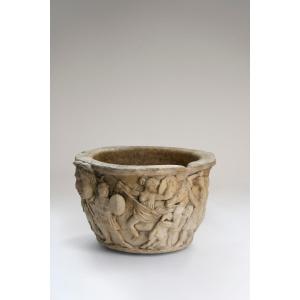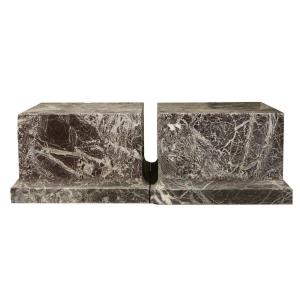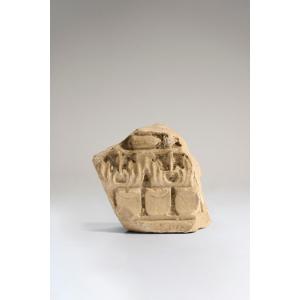Alabaster Boar sculptures inspired by Antiquity
Florence, Italian work of the 19th century
Carved alabaster, later ebonized wood bases
Height: 14 cm each
These two finely sculpted alabaster figures depict boars in a vigilant reclining posture, directly inspired by the celebrated Porcellino of Florence. The original model, now housed in the Uffizi Gallery, is a Roman copy of a lost Hellenistic bronze attributed to the Pergamene school (circa 200 BC).
Rediscovered during the Renaissance and installed near the Mercato Nuovo in Florence, Il Porcellino became a beloved civic symbol. The bronze version, cast in the early 17th century by Pietro Tacca, gained widespread popularity as a good-luck charm—visitors continue to rub its snout to this day in hope of fortune.
The detailed rendering of the fur, the tension of the musculature, and the expressive attitude of the animals attest to the skill of an accomplished sculptor steeped in neoclassical taste.
Comparative bibliography:
Paolo Liverani, Il Porcellino e il suo mito, Florence, 2006.
Seymour Howard, “The Antique as Inspiration in 19th-Century Florence,” Artibus et Historiae, vol. 13, no. 25, 1992.
Giuliano Briganti, La maniera italiana, Florence, 1961.































 Le Magazine de PROANTIC
Le Magazine de PROANTIC TRÉSORS Magazine
TRÉSORS Magazine Rivista Artiquariato
Rivista Artiquariato